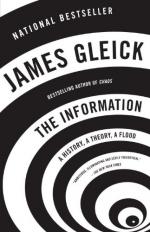
|
| Name: _________________________ | Period: ___________________ |
This quiz consists of 5 multiple choice and 5 short answer questions through Chapter 6.
Multiple Choice Questions
1. What was used in the earliest known method of writing language?
(a) Pictures.
(b) Numbers.
(c) Codes.
(d) Zeroes and ones.
2. How did Bertrand Russell address conflicting results produced by the Principia Mathematica? the problem of these recursive paradoxes by simply making them against the rules of his formal system.
(a) Russell altered the Principia Mathematica to adjust for conflicting results.
(b) He ignored them since they were infrequent.
(c) He made them against the rules.
(d) He implemented exceptions into the system.
3. Who first defined the concept of "bandwith"?
(a) Harry Nyquist.
(b) Albert Einstein.
(c) Samuel Morse.
(d) Alexander Graham Bell.
4. What culture grouped characters in categories such as tools, weapons, plants, animals, and buildings?
(a) The Egyptians.
(b) The Inca Culture.
(c) The Italians.
(d) The Chinese.
5. How did the telegraph advance weather forecasting?
(a) Weather disruptions could be detected when sending messages.
(b) Weather reports could be sent all over the world.
(c) Lightning in the air could be detected by the operation of the telegraph.
(d) Larger patterns of weather could be learned.
Short Answer Questions
1. in what year did John Carrington, an English missionary, publish "The Talking Drums of Africa"?
2. What word book by Robert Cawdrey was published first in 1604?
3. The early telegraph had trouble functioning under what conditions?
4. What was the goal of James Murray when he wrote the first Oxford English Dictionary in 1879?
5. What was the small device intended to replace bulky vacuum tubes perfected by Bell Laboratories called?
|
This section contains 277 words (approx. 1 page at 300 words per page) |

|




